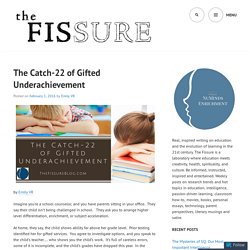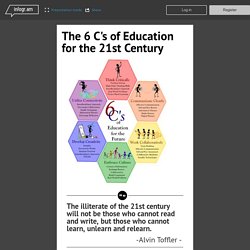

How to Determine if Student Engagement is Leading to Learning. Excerpted from the book, “UnCommon Learning: Creating Schools That Work for Kids,” by Eric Sheninger, published by Corwin, 2015. Engagement Does Not Always Equate to Learning No matter where I am, whether it is a physical location or virtual, I am always hearing conversations about how technology can be used to engage students effectively.
This is extremely important as the majority of students spend six to eight hours a day in schools where they are completely disengaged. I for one can’t blame today’s learner for being bored in school when I all have to do is observe my own son at home playing Minecraft to see firsthand his high level of engagement. His Minecraft experiences provide meaning and relevance in an environment that is intellectually stimulating but, more importantly, fun.
Hidden Curriculum (2014) provides the following definition of engagement: Personalization v Differentiation v Individualization (v3) Personalized vs. differentiated vs. individualized learning. Lesson Study: Teacher-Led PD That Works. One of the best aspects of my work is that I get to meet many talented educators.

I'm on the road this week, and I invited two of them to do guest posts. The first comes from Matt Karlsen, Project Director of Teaching American History Grants at ESD 112 in Vancouver, Washington. Matt and I first connected on Twitter then recently met over coffee. I was impressed with the success his group's Lesson Study approach. There's a hysterical video called “Collaborative Planning” currently going viral. Thankfully, I’ve been able to work with teachers for the last several years using Lesson Study, a format that is collegial, educative, and transformative.
The 4 essentials of a successful Genius Hour. Genius Hour projects may be open ended, but there are still some ground rules.

The Catch-22 of Gifted Underachievement. By Emily VR Imagine you’re a school counselor, and you have parents sitting in your office.

They say their child isn’t being challenged in school. They ask you to arrange higher level differentiation, enrichment, or subject acceleration. At home, they say, the child shows ability far above her grade level. Prior testing identified her for gifted services. What do you do? If you haven’t received training in gifted education, the teacher’s perspective might make perfect sense. How Has Google Affected The Way Students Learn? Take a look at this question: How do modern novels represent the characteristics of humanity? If you were tasked with answering it, what would your first step be? Would you scribble down your thoughts — or would you Google it? Terry Heick, a former English teacher in Kentucky, had a surprising revelation when his eighth- and ninth-grade students quickly turned to Google.
Why Students Don't Do Their Homework. Personalized vs. differentiated vs. individualized learning. Simon Sinek: How great leaders inspire action. The 6 C`s of Education for the 21st Century. The illiterate of the 21st century will not be those who cannot read and write, but those who cannot learn, unlearn and relearn.

CRITICAL THINKING allows the individual to manage information. Information presented in a multitude of forms from a variety of media. Information that must be filtered and analyzed, authenticated and processed, and eventually must be synthesized in a form that will be useful to the individual. CRITICAL THINKING is PROBLEM SOLVING, the ability to take information and put it to use to create solutions. COMMUNICATION provides the means by which the individual can present information. COLLABORATION engages the individual in the world they share through association. CREATIVITY provides the avenue for expression. Leadership Truths for Curriculum Leaders. What is a curriculum leader? A second grade teacher can serve as a curriculum leader.
Principals and Assistant principals should also be viewed as curriculum leaders. A central office staff member may have the title of Chief Academic Officer or Curriculum Director, but that does not mean they are the only curriculum leader in the school district. Once teachers begin communicating with teachers in the same grade level and make connections with the next level (i.e., middle school and high school transition), students will benefit from increased clarity on the essential learning outcomes.
Curriculum leadership involves working with multiple people to ensure that the curriculum is aligned both horizontally and vertically. Ten Leadership Truths for Curriculum Leaders. Do You Know the Seven Stages of Innovation? At IdeaScale, we define prolific innovators as organizations that have moved more than half of their ideas to the final stage.

This doesn’t necessarily mean that every suggested idea became a value-generating, implemented reality. This means that the completed ideas had each been investigated, responded to, and a decision was made to move forward or not. But of course, at least a portion of those completed ideas generate measurable constructive outcomes. Western Australia Police is an organization that meets this criteria. Their community has demonstrated ongoing activity over the course of their program and more than half of those ideas have been launched or archived.
But Western Australia Police is not unique in its success (certainly there are numerous organizations from both the public and private sector that administer successful innovation programs), but what IdeaScale found is that it’s also not unique in its process.